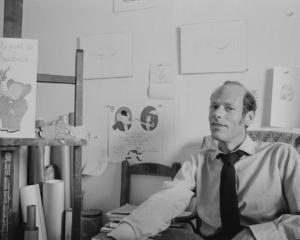THE BALLROOM
Anna Hope
Doubleday/Penguin Random House
Reviewed by CUSHLA MCKINNEY

Having barely scraped through his medical exams, Charlie Fuller's position as first assistant medical officer, bandmaster and head of music at Sharston Asylum for pauper lunatics is all that he could possibly have hoped for and more.
Not only is it a more respectable position than his academic performance warrants, it combines medicine with Fuller's real passions: music and the emerging science of eugenics.
In response to calls for the sterilisation of the feeble-minded and chronic paupers to prevent them becoming an undue drain on society, Fuller embarks on a bold experiment intended to prove that a combination of meaningful work, music and segregation could not only achieve the same ends, but even improve the destitute insane.
To this end he institutes regular music therapy sessions for his patients along with a weekly dance at which the men and women can interact under strict supervision, and chooses a chronically depressed young Irishman called John Mulligan as his test subject, whose redemption he intends to present at the 1912 International Eugenics Congress.
But although John's enforced participation in the dances has the desired effect of lifting of his spirits, this result is due to neither the music nor Fuller's attentions, but those of another inmate, Ella Fay. Angered by both his patients' disturbing attractiveness and complete lack of gratitude, Fuller abandons his original theory and adopts a far more punitive approach to his patients, with disastrous consequences.
The novel's first-person narrative, which alternates between Charles, Ella and John, paints a grim picture: male patients labour on the farm surrounding the asylum or dig the mass graves necessitated by a 15% mortality rate among inmates, while the women are confined entirely indoors.
Whilst the bleakness is leavened by John and Ella's love story, and The Ballroom ends on a redemptive note, it ultimately left me profoundly unsettled. In part this is because, although fictional, the story is firmly grounded in fact (Hope's own grandfather died in an institution not unlike Sharston), but even more disturbing are the resonances between historical attitudes towards the poor and those of the present day.
Opinions - quoted verbatim from the 20th century's foremost eugenicists - that "lack of initiative, lack of control, and an entire absence of a right perception are far more important causes of pauperism than any of the alleged economic causes'' or that "[t]hose sections of the community which are least successful in earning a decent living are reproducing their kind more rapidly than those in receipt of higher wages'' are uncannily similar to sentiments I have heard repeated, albeit less bluntly, in contemporary political discourse.
And, although asylums such as Sharston are no more, if we can find no better way to treat patients such as Ashley Peacock than to condemn them to years of solitary confinement, I really wonder just how far we have advanced in the intervening century.
Cushla McKinney is a Dunedin scientist.











